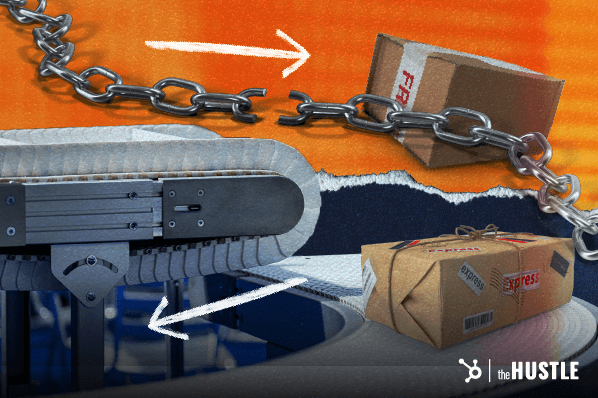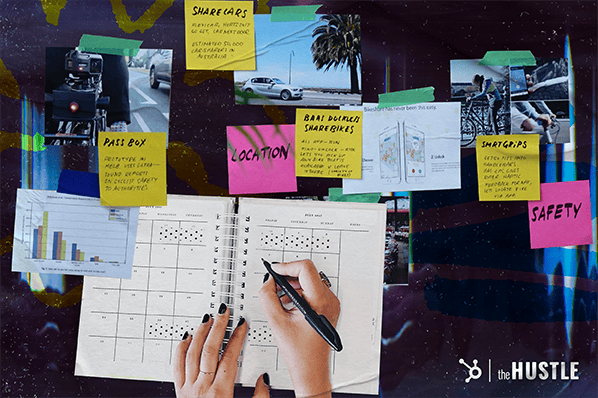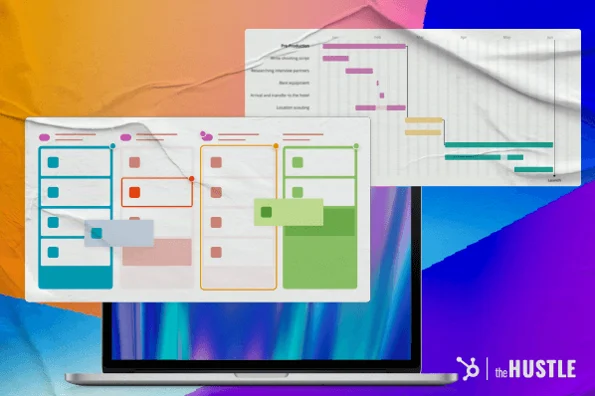Companies solve problems through products and services. But figuring out a customer’s wants and needs is easier said than done. After all, what do people need? And what do people want?

Tapping into how people work can set your company up for long-term success. Understanding the why behind people’s needs and wants can improve your customer research, help characterize buyers, and lead to better product designs.
What Do People Need?
People need air, water, food, shelter, and other bare necessities. A need enables people to live stable and healthy lives. This differs from a want — a deficiency in a need causes a clear adverse outcome. Without water, you dehydrate. Without food, you starve. You might want pizza, but you need food.
Psychologist Abraham Maslow created a pyramid to classify human needs. Maslow’s Hierarchy of Needs, first introduced in 1943, still remains relevant today.
%20(1).webp?width=650&height=383&name=72%20Design%202%20-%20Blog%20Image%20-%20Seo%20Play%20(1)%20(1).webp)
His model explains that people have basic needs that must be prioritized before seeking out other needs. For example, one would seek out food and water (physiological needs) before worrying about what their neighbors think of them (love and belonging).
The pyramid include the following levels:
Physiological Needs
Physiological needs include air, food, water, shelter, warmth — anything necessary for human survival.
Safety Needs
Safety needs involve aspects that protect people from the elements, including security, law and order, and stability.
Love and Belonging
Humans need to feel loved (e.g., family, friends, partners) and a sense of belonging (e.g., community groups, schools).
Esteem
Esteem revolves around self-respect and respect from others. It includes status, recognition, and confidence.
Self-Actualization
Self-actualization means reaching one’s full potential. This can involve creativity, problem-solving, morality, and anything one might desire to achieve.
In theory, as people meet their more basic needs, they move up the pyramid. In reality, life’s a little more complicated. But Maslow’s Hierarchy of Needs offers a clearer way of understanding human needs and motivation.
What Do People Want?
A want involves having an aspiration or desire for something. You might want to stay home during a rainy day. Or you might want to try out the new sushi place in town. A want differs from a need — not fulfilling a want does not always result in adverse consequences.
In the context of products, for example, people might want:
- Ease of use: An easily understandable and intuitive product
- Convenience: A smooth and seamless buyer's journey and onboarding experience
- Cost-efficiency: A price that matches a customer's willingness to pay
- Value or flexibility: A product that effectively solves a problem
- Style: An aesthetic that helps customers express their identity
What Are Examples of Wants and Needs?
Examples of Needs
Maslow’s hierarchy can help companies unearth key pain points or problems customers face. Since few address physiological needs, most companies can create solutions starting with one layer from the bottom.
- Safety: Products that help protect customers appeal to their need for safety. For instance, a home security system allows customers to feel comfortable in their homes.
- Love and belonging: Belonging often centers on community — which social networking sites appeal to. As an example, Instagram helps users connect with friends, share photos, and receive feedback.
- Esteem: Luxury brands appeal to esteem, which involves status. Whenever someone flashes a Rolex watch on their wrist, it gives them a sense of social status and self-esteem.
- Self-actualization: Broadly speaking, any product that aims to better one’s self appeals to self-actualization. For example, Duolingo encourages users to “make every day count” by learning parts of a new language.
Examples of Wants
When figuring out how to solve a customer problem, consider how you can embed both needs and wants into its features. Examples of wants might include:
- Ease of use: Offering tutorials to make it simpler for customers to understand a product
- Convenience: Reducing the number of steps needed to buyer a product, such as implementing a one-click purchase feature
- Cost-efficiency: Adding more value than competitors, such as helpful customer service or extra features, while offering a comparable price
- Value or flexibility: Enabling a product to work with others, such as apps or software, can increase its value
- Style: Creating a sleek, aesthetically pleasing product design (e.g., colors and shape)
How To Find Out What People Want and Need in a Product
Every person’s product wants and needs differ from each other. As an entrepreneur, you should avoid trying to meet the needs of everyone. Conduct research and figure out your ideal buyer persona to narrow down the focus.
What problems do your target customers face? What do they want from a business? To get these insights, you can conduct the following to get started:
Analyze first-party data: Data collected by your company, such as product and customer feedback, can help you understand people’s wants and needs.
Review customer behavior: Using the customer journey map, write out how to attract different types of audience to each part of the buying journey.
Collect qualitative data: Focus groups and surveys can uncover and verbalize the wants and needs of your customers.
Conduct A/B testing: You can test different versions of prototypes, concepts, or ideas with users, and collect feedback.
Create product usage reports: Document how and when people use your product, then leverage the data to determine which features of your product or service matters most to your audience.
Conduct RFM Analysis: RFM Analysis involves identifying high-value consumers by looking at the recency, frequency, and monetary value a customer provides to a specific company.
Collect customer feedback: Enable users to easily provide reviews and check the data for common complaints and trends.
Create buyer personas: Buyer personas can help you humanize your customer instead of viewing them as a number.
Test your product: Before a formal launch, try beta testing your product or service — which can help you figure out what to scrap and what to spend more time on.
Analyze competitors: Your competitors have likely conducted significant research into your audience — look at how their audience responds to their product, and where they can improve.
Consider trends: Stay up to date with the latest industry trends and how they may impact your company’s audience.
Conduct first-click testing: First-click testing involves analyzing how customers interact with your website. By measuring how long it takes a user to complete a desired action, you can reduce obstacles.













